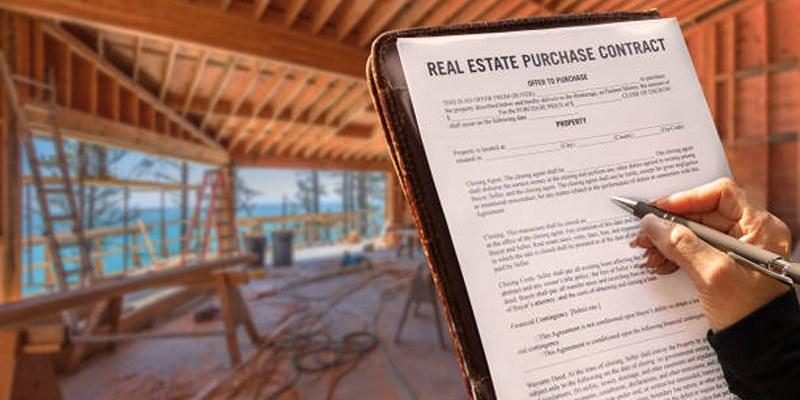Builder's Risk Coverage Form is an integral element of construction and renovation projects, safeguarding against the myriad of risks associated with these activities. Designed to protect projects from inception through completion, this insurance coverage plays a pivotal role in financial planning and risk management for builders, contractors, and property owners alike. It covers a broad spectrum of potential losses, including damages due to fire, extreme weather, vandalism, and theft. This guide aims to demystify the complexities surrounding Builder's Risk Insurance by providing comprehensive insights into its nuances and applications. Understanding its scope, limitations, and the strategic approach towards tailoring coverage to specific project needs is crucial for anyone involved in the construction industry.
Understanding Builder's Risk Coverage Form:
Builder's Risk Coverage Form is a type of property insurance that covers the risks and perils associated with construction and renovation projects. It protects against potential damages to the structure, building materials, and equipment on the project site. This coverage is typically purchased by the owner or contractor responsible for the project, but it can also be obtained by subcontractors or other parties with an insurable interest in the project. The coverage period for Builder's Risk Insurance typically begins when construction starts and ends once the project is completed and handed over to the owner.
The policy can be extended to cover additional risks during the course of construction, such as design changes or delays. It is important to note that Builder's Risk Insurance only covers physical damage to the insured property; it does not cover liabilities or losses due to injuries or accidents on the project site.
The Ins and Outs of Purchasing Builder's Risk Coverage:

When purchasing Builder's Risk Insurance, several factors should be taken into consideration. These include the location of the project site, the type of construction being undertaken, and the duration of the project. The insurance company will also consider the project's risk profile, such as its vulnerability to natural disasters or potential hazards on the job site. It is crucial to keep in mind that Builder's Risk Insurance is a form of property insurance and does not cover liability or professional errors. As such, it is essential to have additional insurance coverage for these risks, such as General Liability Insurance and Professional Liability Insurance.
How to Accurately Determine Coverage Limits?
One of the most critical aspects of purchasing Builder's Risk Insurance is accurately determining coverage limits. This requires a proper valuation of the project, including all materials and equipment. It is crucial to work with an experienced insurance agent who can help assess the project's value and potential risks. Failure to accurately determine coverage limits could result in inadequate coverage or overpaying for unnecessary coverage.
Identifying the Right Insurance Provider for Your Project:
Not all insurance providers offer Builder's Risk Coverage, and even among those that do, coverage terms and conditions may vary. When choosing an insurance provider for your project, it is essential to look for a company with experience in insuring construction projects and a strong financial standing. It is also crucial to carefully review the policy exclusions and limitations to ensure they align with your project's needs. Additionally, it may be beneficial to work with an insurance broker who can help shop around and negotiate the best coverage terms and premiums for your project.
The Application Process: From Underwriting to Claims

The application process for Builder's Risk Insurance involves underwriting, which is the assessment of risk by the insurance company. This includes evaluating the project details, such as location, construction plan, and materials used. Once the policy is issued, it is crucial to carefully review all terms and conditions and ensure that any necessary endorsements or additional coverage are included.
Preparing Your Application: What Information You'll Need:
To prepare your application for Builder's Risk Insurance, you will need to provide detailed information about the project, including its location, scope of work, and estimated value. You may also be required to provide a construction schedule and list of subcontractors involved in the project. It is important to have all this information ready before starting the application process.
Tips for a Smooth Application Process: Do's and Don'ts:
When applying for Builder's Risk Insurance, there are certain do's and don'ts to keep in mind. Do provide accurate and detailed information about the project. Don't underestimate the value of your project or leave out important details. It is also essential to communicate any changes or updates to the insurance provider throughout the course of construction. This will help ensure that your coverage remains adequate and up-to-date.
Making Claims on a Builder's Risk Policy: What to Expect
In the event of a loss or damage, it is essential to understand how to make a claim on your Builder's Risk Policy. This typically involves reporting the incident to the insurance company and providing supporting documentation, such as photos and receipts. The claims process may also involve an investigation by the insurance company and potential negotiation of coverage limits. It is vital to work closely with your insurance provider and provide all necessary information to expedite the claims process.
Documentation Requirements for a Builder's Risk Claim: What You Need to Provide
When making a claim on your Builder's Risk Policy, it is essential to provide thorough documentation. This may include photographs of the damage or loss, estimates for repairs or replacements, and proof of ownership or purchase for any damaged materials or equipment. It is crucial to keep all receipts and records related to the project to support your claim.
Conclusion:
Builder's Risk Insurance is an essential aspect of project risk management for construction projects. It provides coverage for damages or losses to the building and its materials during the course of construction. To accurately determine coverage limits, it is crucial to work with an experienced insurance agent and provide thorough documentation throughout the application and claims process. By understanding the importance of proper valuation and choosing the right insurance provider, you can protect your project and mitigate potential financial risks.




